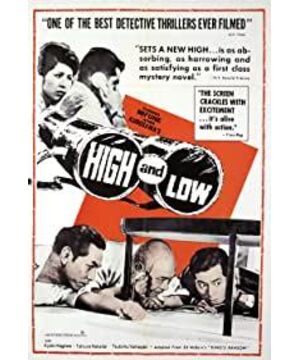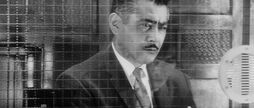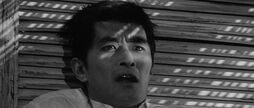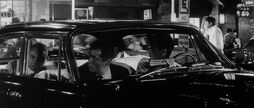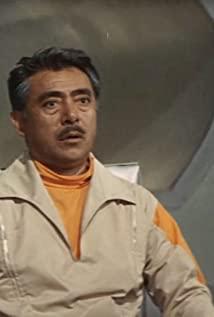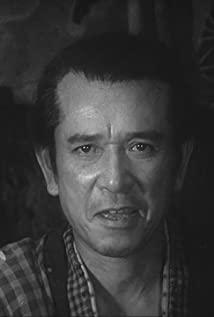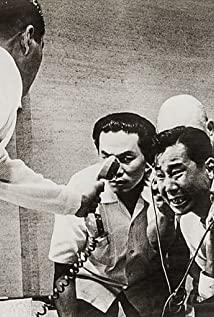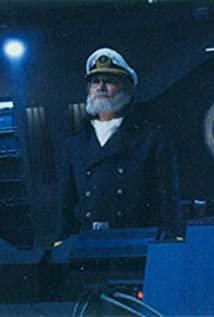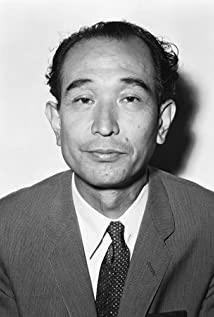"Heaven and Hell": You are my enemy
Wen and Yun-chao
Director: Akira Kurosawa Cast: Toshiro Mifune, Nakadai, Kyoko Kagawa, Shimura bridge type: gangster film Running time: 140 minutes
Mentioning the name Kurosawa Akira, there are obviously ten or eight classics that can be said casually, but "Heaven and Hell" filmed in 1963 may be relatively cold in Kurosawa's film, but I am very personal. like. In Kurosawa Akira's black and white films, the peaks of "Rashomon," "Seven Samurai," and "Warring States Heroes" that have won international awards, in the 1960s, "Heaven and Hell" and "Red Beard" are still Continued his exquisite skills, and his quality is still brilliant. Heaven and hell are obviously a bipolar concept full of contrasts, and this film is also divided into two parts in a completely different way. The basis of the story continues the literary adaptations that Kurosawa is very good at. The seemingly more traditional police and gangster story of "Heaven and Hell" deeply highlights the dark side of capitalist society, the gap between the rich and the poor, and the opposition between interpersonal relationships. Chemicals have created an increasingly serious social problem-"You are my enemy". The Japanese nation, which was originally influenced by Eastern civilization, will become an industrialized "hell". Kurosawa is deeply puzzled. His inner grasp of literary works is world-class, and "Heaven and Hell" is only a story core borrowed from the original work. The entire film has become his thoughts, especially the latter part. The plot about kidnapping in the front of the film is from a novel, combined with the social reality of the rise of the Japanese economy in the 1960s. The first 55-minute scenes are all concentrated in the protagonist Koto’s luxurious and elegant mansion (at least in the film Japan in the 50s and 60s set in the plot should be regarded as a luxury house). As the owner of a large shoe company, Koto’s residence is a luxurious and tidy house. On the contrary, the victim driver Aoki is a low-level figure and a disadvantaged group who needs help from others. His dialogue with Koto, praying for help, and The position of the action in the picture fully reflects the difference in levels. Kurosawa has not always forgotten that the theme of the film is this "heaven and hell" level. At that time, Japanese society was gradually regaining the status of a generation of power through economic development, but the gap between the rich and the poor in Japan was rapidly widening, and the spirit of the Japanese became full of modern indifference. As a result, the crime rate was beyond imagination. Kurosawa, who is full of humanitarian thoughts, feels incredible, so he tries to find some kind of answer in this film. Not long after the film started, Ke Teng received a call from his home to kidnap a child and decided to raise money to save the person. Police officer Tokura and others went to Koto's house to handle the case. In this episode, although it is part of the unfolding of the story, the interlocking episodes show Kurosawa Akira's extremely sophisticated and outstanding ability to grasp the scene. The position of the characters on the screen, the arrangement of the purpose of the action, the changes between the scenes, and the use of the camera are all exemplary works of a generation. For example, Kurosawa is very good at using the sense of stability of the triangle orientation, with the aid of shadows and background embellishment effects. In "Heaven and Hell", there is a night scene in the front part of the house where the characters are talking in the house. The background window shows the night view of the big city. There are occasional cars passing by and the lights flashing in the distance. It looks like an ordinary picture, but in fact, after careful design by the director and staff, it was difficult for ordinary cameras to accurately capture the depth of field outside the window, and the effect of the car lights could be seen clearly, showing the location of Koteng. The status of a tycoon must show a certain kind of traffic and feasting. As a result, the crew specially finds the large searchlight to make the distant car lights after the flashing effect.
And at the end of the first half of the movie, a long shot of more than 5 minutes was arranged, which should be regarded as an iconic scene in Kurosawa's movie. The screen is divided into three areas, the front, the middle and the back. Police officers are dealing with banknotes, while Ke Teng is sitting in the distance. Finally, he walks from the shadows to the middle of the screen and sits down to modify the suitcase. Prosperity is not a fluke, he is not new to his art. This passage shows that the director’s arrangement is orderly, the characters in the scene change from movement to silence, and then smoothly cut into the second part: the speeding Shinkansen train, the language of the screen contains more information, and many professional film critics think this This section of the film fully represents the outstanding strength of filmmakers in the scene design of that era. This kind of shot is no longer the same as in today’s movies, a shot is continuously shortened to a few tenths of a second, or the actors’ close-ups are alternately switched to highlight the emotional atmosphere. This scene in "Heaven and Hell" can better reflect the director's narrative technique. Mobilizing skills with the scene is also an important reason why directors such as Akira Kurosawa have been regarded as masters. In the second half of the film, the kidnapper actually appears, but he hardly has any lines. He fights wits and courage with the police, showing that the environment he lives in represents the "region", especially the scene where the police catch him at the end. The righteous party actually induced the kidnappers to sell drugs in hopes of heavier penalties, making the film finally break away from the story of the kidnapping and become a place where "Heaven and Hell" has been heavily criticized. From the perspective of the story design, it seems that this is indeed the case, but in fact, this last part should be considered a more profound treatment. The "trap" of police officer Tokura and others against criminals has even more demonstrated the violent nature of justice methods. Although it is sometimes necessary, Kurosawa himself is full of humanitarianism. Although he has the blood of "Bushido" in his bones, It is also chivalrous, and hope that the society is full of justice. However, under the situation of industrialization and capitalism in Japan at that time, the expansion of the dark side of human nature actually included law enforcement. The theme of "heaven and hell" did not have the completely different division of black and white police and gangsters on humans. At the end, Koteng went to the prison to look at the criminals. This is the second time they met (the film was designed to meet on the street at night, but they did not speak). The criminals were not really convinced. In the picture Koteng and the criminals The faces overlap, this technique may not be avant-garde, but in this police film, the director digs out a more inner meaning from the perpetrator and the victim. The murderer does not mean to repent, and even executes him on the ground. Before the road, our viewers can see that his death is not a true "deserved sin". Such a crime is related to the entire society. In such a society, "you are my enemy" and "others are hell". This kind of existentialism is everywhere, and it has created a surge in crime rates in developed societies, which naturally also includes the role of the police. The director just hopes that everyone can think that this murderer may exist in people's hearts, and we need to be alert to ourselves, because "heaven and hell" are just a matter of thought. The charm of Kurosawa's movies lies in his long cultural tradition. Of course, Japanese culture cannot be represented by Kurosawa alone. There is a classic from Mizoguchi, Ozu, Kinoshita, etc., each of which can be used as an annotation. But Kurosawa Akira's international vision is the most representative of the masters. Kurosawa has always been deeply influenced by Western culture, especially in literary influence. From the drama of the pictures, I feel that Dostoevsky and Shakespeare, and Kurosawa's cultural heritage is a model of the combination of East and West. Kurosawa Akira’s later "Shadow Samurai" and "Ran" are masterpieces. From the interpretation of Oda Nobunaga in "Shadow Samurai", we can see Kurosawa Akira’s understanding of Japan’s westernization and Japan’s opening up and It didn’t confuse Kurosawa. On the contrary, he did not appreciate Tokugawa Ieyasu’s later retreat policy. Oda Nobunaga was open to Western countries and Western culture. For example, he invited Tokugawa to drink red wine, but he did not forget his roots. Also proficient in Noh. However, what Kurosawa pays more attention to is the mentality of the Japanese themselves. Therefore, from "Rashomon" to "A Generation of Fresh Masters" are the impact and reflections of modern civilization on classical civilization with psychological projections. That kind of inheritance is to let the audience. I really sigh. In this regard, "Seven Samurai", "Red Beard", "Shadow Warrior", "Ran", "Dream" and "A Freshman" are all outstanding, and "Heaven and Hell" is no exception. Kurosawa Akira’s later "Shadow Samurai" and "Ran" are masterpieces. From the interpretation of Oda Nobunaga in "Shadow Samurai", we can see Kurosawa Akira’s understanding of Japan’s westernization and Japan’s opening up and It didn’t confuse Kurosawa. On the contrary, he did not appreciate Tokugawa Ieyasu’s later retreat policy. Oda Nobunaga was open to Western countries and Western culture. For example, he invited Tokugawa to drink red wine, but he did not forget his roots. Also proficient in Noh. However, what Kurosawa pays more attention to is the mentality of the Japanese themselves. Therefore, from "Rashomon" to "A Generation of Fresh Masters" are the impact and reflections of modern civilization on classical civilization with psychological projections. That kind of inheritance is to let the audience. I really sigh. In this regard, "Seven Samurai", "Red Beard", "Shadow Warrior", "Ran", "Dream" and "A Freshman" are all outstanding, and "Heaven and Hell" is no exception.
The original text was written in 2010
View more about High and Low reviews


